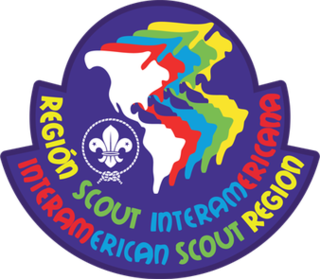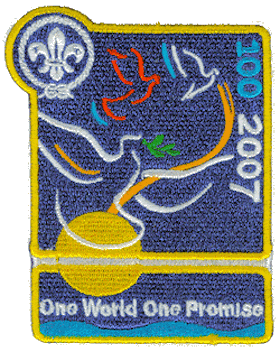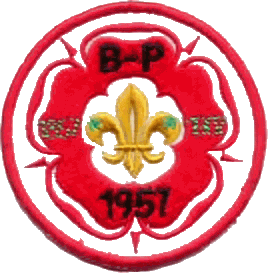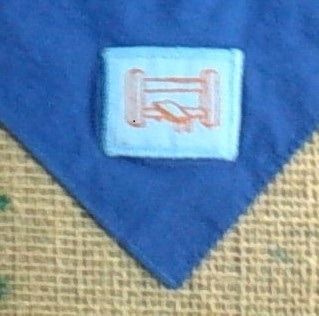
In Scouting, a jamboree is a large gathering of Scouts and/or Girl Guides who rally at a national or international level.

In Scouting, a jamboree is a large gathering of Scouts and/or Girl Guides who rally at a national or international level.
The 1st World Scout Jamboree was held in 1920, and was hosted by the United Kingdom. Since then, there have been twenty-four other World Scout Jamborees, hosted in various countries, generally every four years. The 26th World Jamboree is to be held in Poland in 2027.
The average Scout Life of a boy is a comparatively short one, and it is good for each generation of Scouts to see at least one big rally, since it enables the boy to realize his membership of a really great brotherhood, and at the same time brings him into personal acquaintance with brother Scouts of other districts and other countries.
— Baden-Powell, (September 1932)
There are also national and continental jamborees held around the world with varying frequency. Many of these events will invite and attract Scouts from overseas.
With the birth of the Jamboree concept, other large gatherings are also organized by national Scout organizations, geared towards a particular group of Scouts. Examples of these large gatherings include:
The origin of the word jamboree is not well understood. This is reflected in many dictionary entries. For example, according to the Canadian Oxford Dictionary , the etymology is "19th century, origin unknown". The Oxford English Dictionary (OED) identifies it as coming from American slang, identifying a use in the New York Herald in 1868 and in Irish writing later in the 19th century. [1]
It is popularly believed within the Scouting Movement that the word was coined by Baden-Powell, but there is no written documentation by either Powell or Scouting publications, and the word was in use decades earlier. [2]
Baden-Powell was once asked why he chose "jamboree". He replied, "What else would you call it?" Other than a light-hearted retort, one way his response could have made sense is if the word had already had a specific meaning.[ citation needed ]
Other writers used "jamboree" in the early 20th century, prior to its use in Scouting, to refer to "a lavish or boisterous celebration or party". [2] [3] Poet Robert W. Service used the term in a poem, Athabaska Dick, published in 1912: "They are all a-glee for the jamboree, and they make the Landing ring". [4] Lucy Maud Montgomery used the term three times in 1915 in Anne of the Island , a book set in the 1880s. For example "There was quite a bewildering succession of drives, dances, picnics and boating parties, all expressively lumped together by Phil under the head of “jamborees”. [5]
Robert Graves suggested in 1954 that Baden-Powell might have known the word through his regiment's Irish links, rather than from U.S. slang. [6]
The word "jamboree" has several claimed possible origins, ranging from Hindi to Swahili to Native American languages, which further confuses the meaning used by Baden-Powell. [7] [8]
A guess is that the word "jamboree" is derived from the Swahili for hello, Jambo! . Baden-Powell spent a considerable amount of time in East Africa in the 1880s then again in the late 1890s. [9] [10] [11]
The word "jamboree" is used primarily by the Scouting program following the first Boy Scout jamboree in 1920. Baden-Powell deliberately chose the name "jamboree" where attendees were warmly welcomed attending this first Boy Scout rally or meeting with the word "jambo."
The word jamboree in English is used as a borrowed foreign word, with the ending -ree. The word jamboree is both a noun and a transitive verb, with a direct action of the root word jambo. [12] For example, an attendee of a jambo is a jamboree.
Many, at this first "jamboree" or Scout gathering, did not fully capture the spirit of this then-new concept or greeting. At the first World Jamboree at Olympia, London, in 1920, Baden-Powell said:
"People give different meanings for this word, but from this year on, jamboree will take a specific meaning. It will be associated to the largest gathering of youth that ever took place." [13]
Olave Baden-Powell coined the term jamborese to refer to the lingua franca used between Scouts of different languages and cultural habits, that develops when diverse Scouts meet, that fosters friendship and understanding between Scouts of the world. Sometimes the word "jamborette" is used to denote smaller, either local or international, gatherings. [14]
A similarly-used word, "camporee," in the Scouting program is also reflective of the older British use. "Camporee" reflects a local or regional gathering of Scouting units for a period of camping and common activities. [15] Similar to a camporee, a jamboree occurs less often and draws units from the entire nation or world. [16] [17] [18]

Scouting, also known as the Scout Movement, is a worldwide youth social movement employing the Scout method, a program of informal education with an emphasis on practical outdoor activities, including camping, woodcraft, aquatics, hiking, backpacking, and sports. Another widely recognized movement characteristic is the Scout uniform, by intent hiding all differences of social standing in a country and encouraging equality, with neckerchief and campaign hat or comparable headwear. Distinctive uniform insignia include the fleur-de-lis and the trefoil, as well as merit badges and other patches.

A Scout is a child, usually 10–18 years of age, participating in the worldwide Scouting movement. Because of the large age and development span, many Scouting associations have split this age group into a junior and a senior section. Scouts are organized into troops averaging 20–30 Scouts under the guidance of one or more Scout Leaders or Scoutmasters. Troops subdivide into patrols of about 6–8 Scouts and engage in outdoor and special interest activities. Troops may affiliate with local, national, and international organizations. Some national Scouting associations have special interest programs such as Air Scouts, Sea Scouts, outdoor high adventure, Scouting bands, and rider Scouts. In the USA there was around 6 million scouts in 2011.

The World Scout Jamboree is a Scouting jamboree of the World Organization of the Scout Movement, typically attended by several tens of thousands of Scouts from around the world, aged 14 to 17. At the jamboree, many scouts swap badges.

A camporee is a local or regional gathering of Scouting units for a period of camping and common activities. Similar to a camporee, a jamboree occurs less often and draws units from the entire nation or world. It should not be confused with the Australian term "jamborette".

The Interamerican Region is the divisional office of the World Scout Bureau of the World Organization of the Scout Movement, headquartered in Ciudad del Saber, Panama. The Interamerican Region services Scouting in the Western Hemisphere, both North and South America. Until the 1960s, the "Inter-American Scout Advisory Committee" serviced only Mexico, Central and South America, with Canada and the United States serviced through the then-named "Boy Scouts International Bureau" in Ottawa, Ontario, Canada. Even today, the Interamerican Region exists more for the benefit of countries south of the Rio Grande, as evidenced by the website being only in Spanish until 2011; consequently, the United States and Canada did not participate as vigorously in regional activities as do other national organizations around the world, however this is changing in the 2010s.

William Hillcourt, known within the Scouting movement as "Green Bar Bill", was an influential leader in the Boy Scouts of America (BSA) organization from 1927 to 1992. Hillcourt was a prolific writer and teacher in the areas of woodcraft, troop and patrol structure, and training; his written works include three editions of the BSA's official Boy Scout Handbook, with over 12.6 million copies printed, other Scouting-related books and numerous magazine articles. Hillcourt developed and promoted the American adaptation of the Wood Badge adult Scout leader training program.

The World Scout Indaba was a series of three gatherings of Scout Leaders from around the world, held in 1952, 1957 and 1960. The idea was proposed in 1949 at the 12th World Scout Conference in Elvesæter, Norway where The Boy Scouts Association of the United Kingdom submitted that of the large number of Scouters working in a pack, troop or crew, only a very small percentage were ever able to take part in a major international Scout gathering. Indaba is Zulu for "tribal conference" and the name was suggested by Lord Rowallan.

The 21st World Scout Jamboree was held in July and August 2007, and formed a part of the Scouting 2007 Centenary celebrations of the world Scout Movement. The event was hosted by the United Kingdom, as 2007 marked the 100th anniversary of the founding of Scouting on Brownsea Island.

The Scouting 2007 Centenary comprised celebrations around the world in which Scouts celebrated 100 years of the world Scout movement. The original celebrations were focused on the United Kingdom, such as the camp on Brownsea Island, the birthplace of Scouting, and the 21st World Scout Jamboree in Chelmsford, Essex.

The Brownsea Island Scout camp was the site of a boys' camping event on Brownsea Island in Poole Harbour, southern England, organised by Lieutenant-General Baden-Powell to test his ideas for the book Scouting for Boys. Boys from different social backgrounds participated from 1 to 8 August 1907 in activities around camping, observation, woodcraft, chivalry, lifesaving and patriotism. The event is regarded as the origin of the worldwide Scout movement.

The 3rd World Scout Jamboree was held in 1929 at Arrowe Park in Upton, near Birkenhead, Wirral, United Kingdom. As it was commemorating the 21st birthday of Scouting for Boys and the Scouting movement, it is also known as the Coming of Age Jamboree. With about 30,000 Scouts and over 300,000 visitors attending, this jamboree was the largest jamboree so far.
The Nippon Scout Jamboree is a Scouting Jamboree held by the Scout Association of Japan, and is the largest Scouting event in Japan. "Scout" was added to the name beginning in 2018.
The Scout and Guide movement in Australia consists of:
Scouting and Guiding in the United Kingdom is served by several different organisations:
There have been several World Camps held by the Girl Guides and Girl Scouts, first held in 1924. Organized by the World Association of Girl Guides and Girl Scouts, unlike World Scout Jamborees, World Camps are not named with an ordinal number, nor is there an attempt to hold them at regular intervals.

The 9th World Scout Jamboree, also known as the Jubilee Jamboree, was held at Sutton Park, Royal Town of Sutton Coldfield, Warwickshire, England, for twelve days during August, 1957. The Jamboree marked dual milestones as it was both the 50th anniversary of the Scouting movement since its inception at Brownsea Island and the 100th anniversary of the birth of Scouting's founder Robert Baden-Powell.

Lake View Park International Scout Centre , is a scout campsite, Scout Activity Centre, training and conference centre for Scouting groups, which belongs to the 1st Kandy Dharmaraja Scout Group. This 57-acre site is located in Kandy, Sri Lanka.
The Interamerican Scout Jamboree is the biggest event of the Interamerican Scout Region. It is held every four years in a different country of the region. The host country is elected during the Interamerican Scout Conference. Ecuador was announced as the host of the 15th Interamerican Scout Jamboree at the XXV Interamerican Scout Conference in Buenos Aires, Argentina, on 21 September 2013.
Jambo is a Swahili greeting or salutation. It is similar in meaning to the English word Hello.

Agoonoree is a Scouting jamboree for young people with disabilities.
{{cite encyclopedia}}: |website= ignored (help){{cite book}}: CS1 maint: location missing publisher (link)